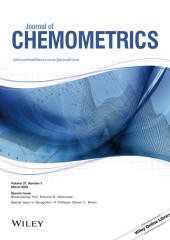Sparse Multiple Factor Analysis, sparse STATIS, and sparse DiSTATIS with applications to sensory evaluation
Hervé Abdi, J-C YU, C. Gómez-Corona, V. Guillemot, "Sparse Multiple Factor Analysis, sparse STATIS, and sparse DiSTATIS with applications to sensory evaluation", In Journal of Chemometrics, 2023.
doi:10.1002/cem.3443
Component-based multitable methods, such as multiple factor analysis (MFA), STATIS, and DiSTATIS, are routinely used to analyze multiblock data, which are now common in chemometrics and sensory evaluation studies. These blocks of data form data tables that—for example, in sensory evaluation—describe how different assessors evaluate a set of products either on a set of descriptors or on the similarity between products. To analyze these data, component-based multitable methods extract orthogonal components explaining most of the variance of the data. However, when the data tables are heterogeneous or have complex structures, a single component space does not represent the data well and can give components that are difficult to interpret. Previous literature solved this interpretation problem by eliminating irrelevant variables—a process called sparsification—while keeping the components orthogonal. Here, we extended such methods to develop sparsification algorithms for three multitable methods, namely, “sparse MFA” (sMFA), “sparse STATIS” (sSTATIS), and “sparse DiSTATIS” (sDiSTATIS). In these sparse methods, we sparsified the data tables to identify the most informative assessors or products. In sMFA, we show how group sparsity can be used to sparsify whole tables (i.e., assessors or products), hereby greatly increasing the interpretability of sMFA's outcome. In sSTATIS and sDiSTATIS, we developed two different sparsification approaches: One approach creates subgroups of products and simplifies the components to facilitate interpretation; whereas the other approach creates subgroups of assessors and alleviates the problem of heterogeneity. We showed with three examples how these sparse methods increase interpretability of the results in sensory evaluation.
Plus d'informations : voir le site de l'éditeur
|
|
|
Cognitive Neuroscience of Memory 01 septembre 2014 - 30 juin 2015 |
|
|

